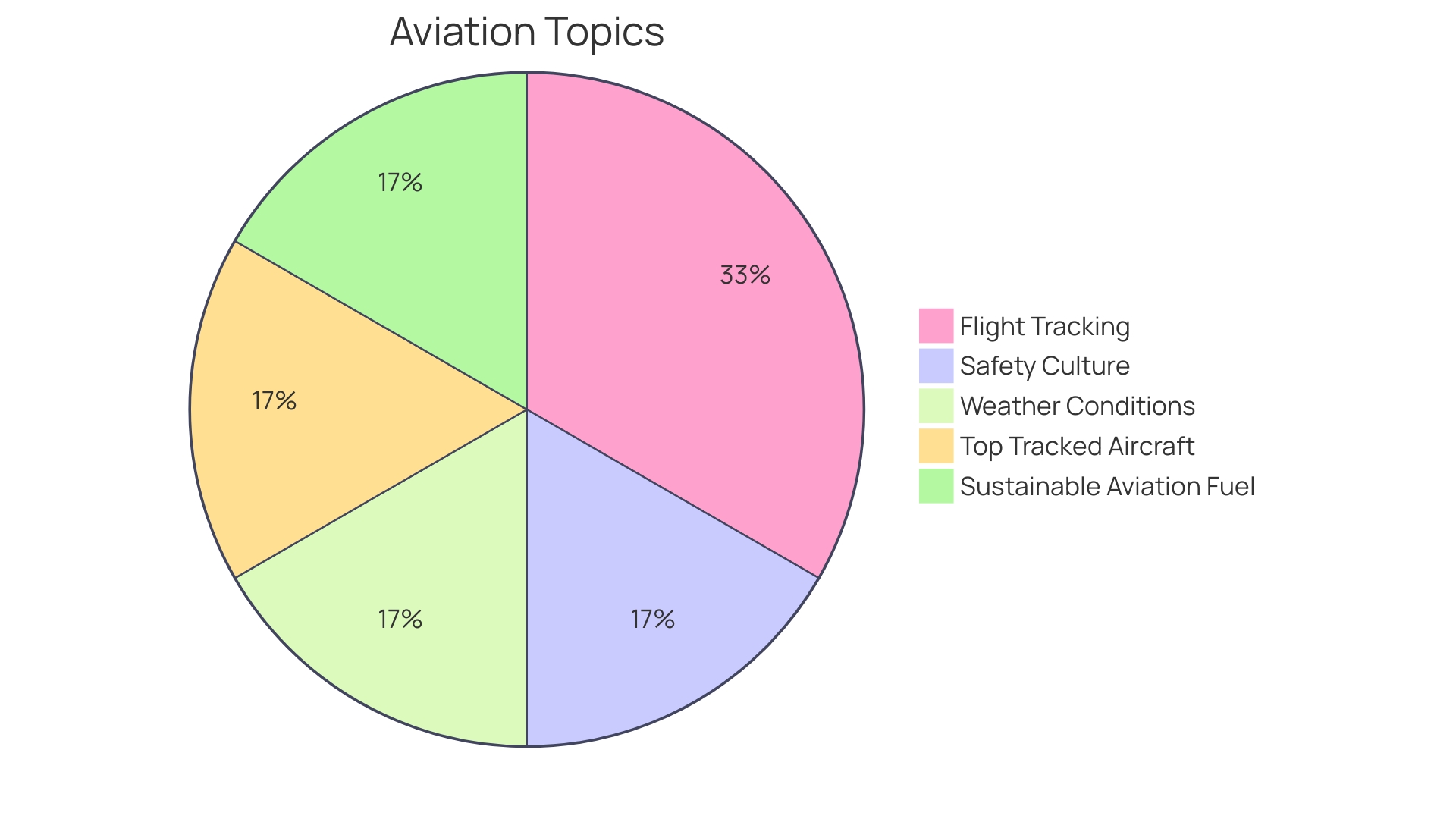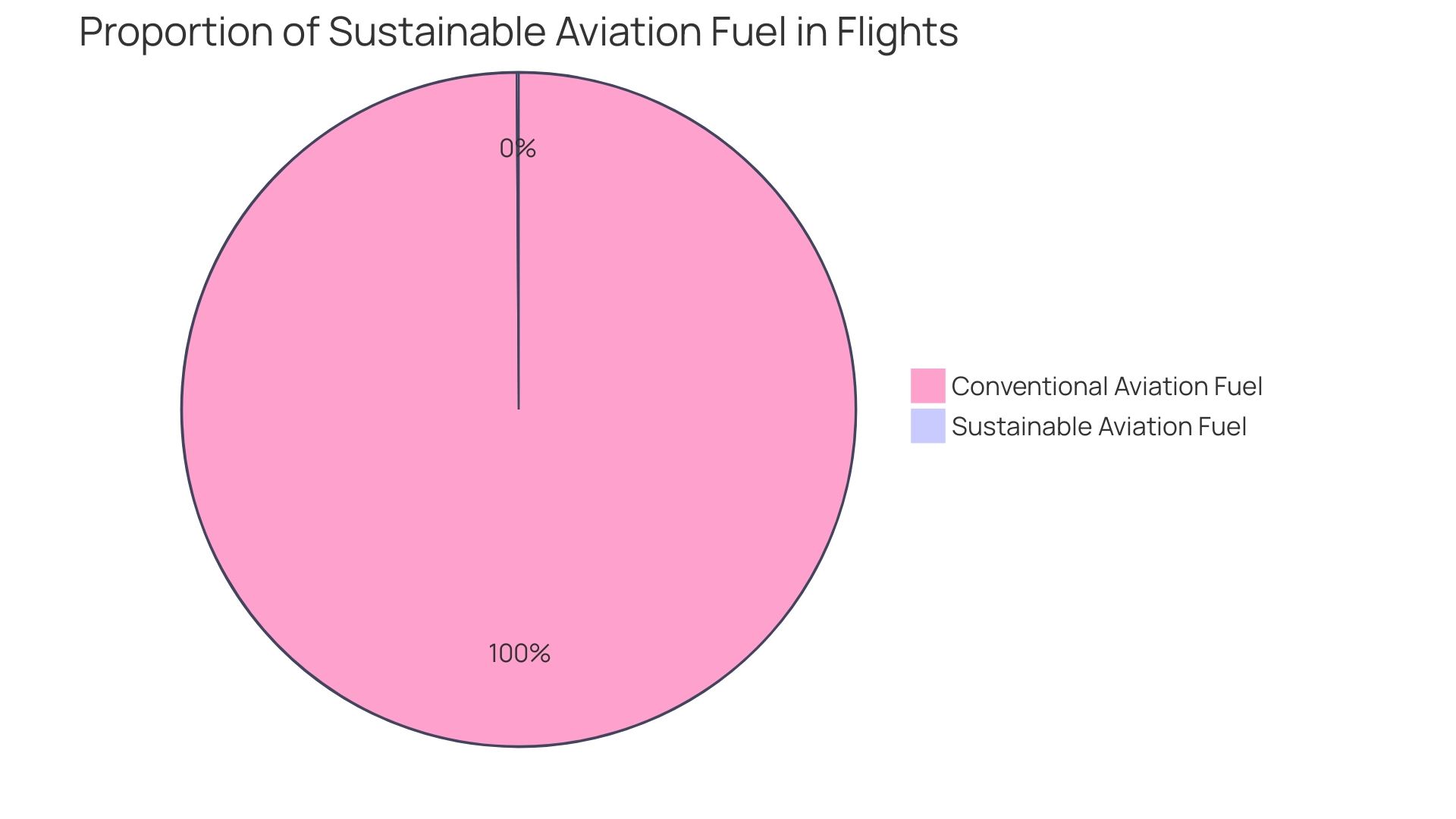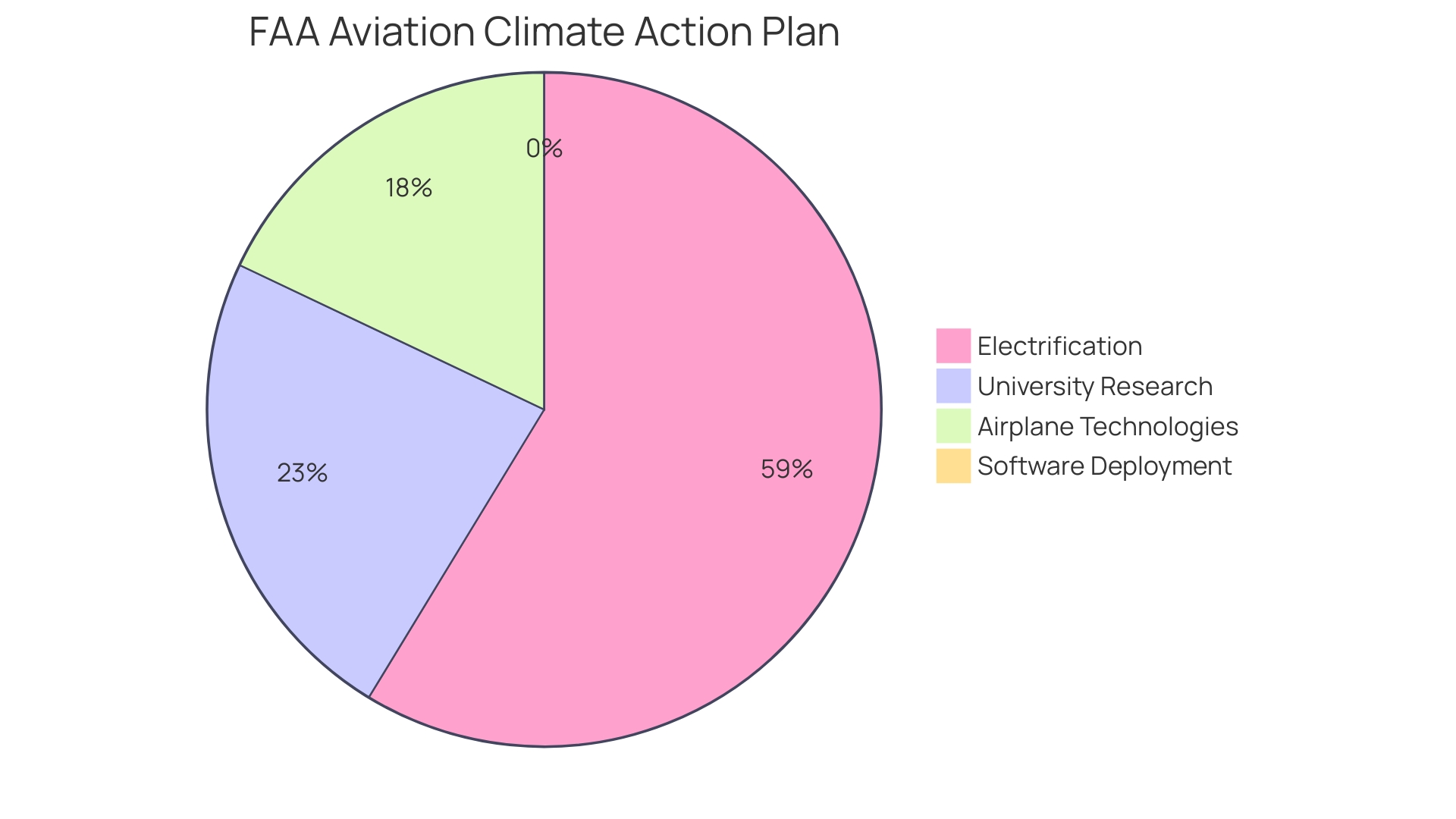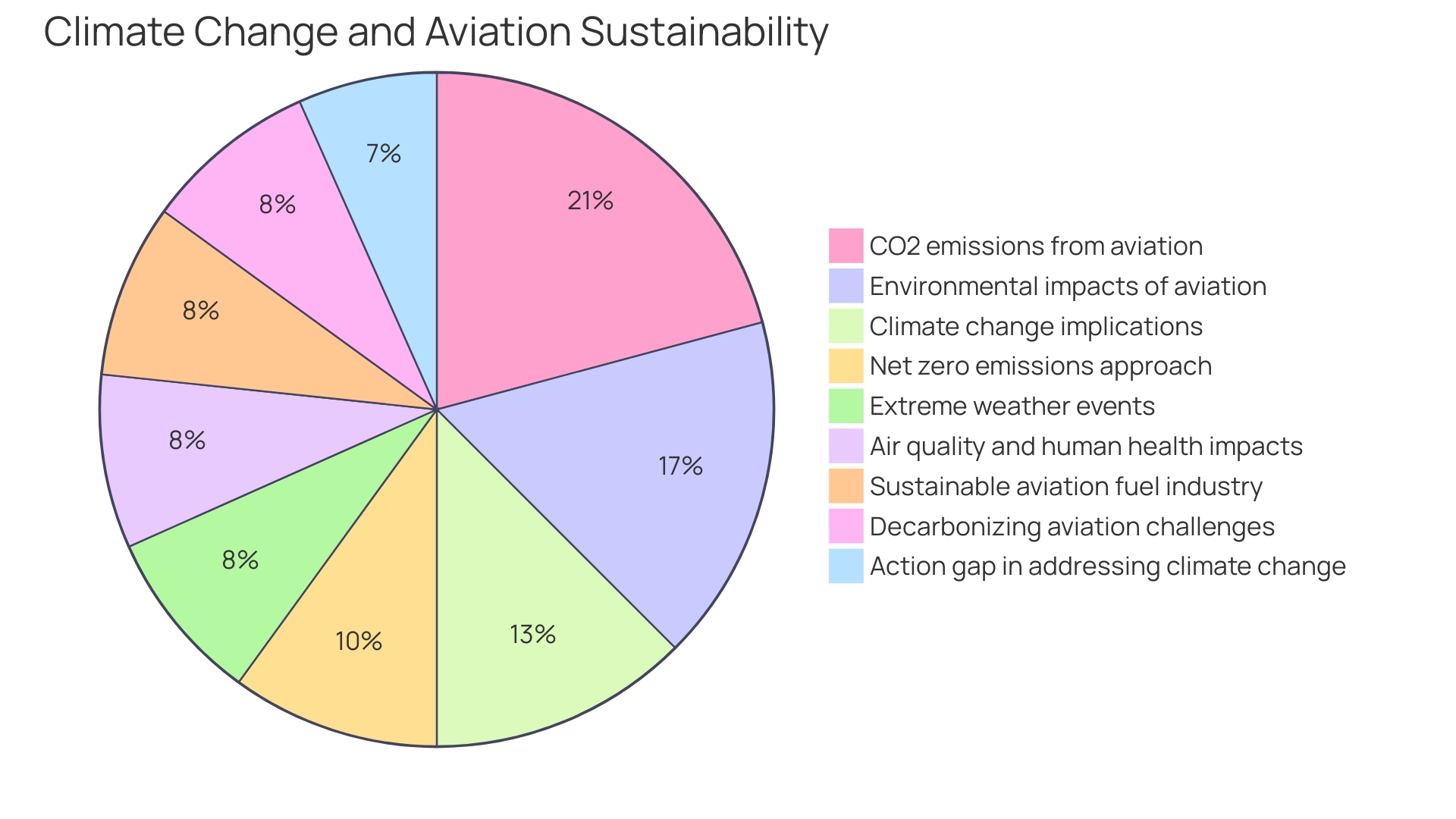Introduction
As the global community grapples with the escalating impacts of climate change, the aviation industry finds itself at a critical juncture. Identified as a significant contributor to greenhouse gas emissions, the sector urgently needs sustainable solutions. Commercial aviation alone accounts for roughly 3.5% of human-induced changes to the Earth's energy balance, with CO2 emissions doubling since the mid-1980s.
The need for sustainable aviation is underscored by recent milestones, such as the historic transatlantic flight powered solely by alternative fuels. Sustainable Aviation Fuel (SAF) has emerged as a crucial element in the quest to decarbonize the skies. It is an energy-dense, renewable fuel that has garnered significant investment due to its potential to meet the industry's stringent safety and reliability standards.
Initiatives like the Airports Climate Challenge and the CLEEN Program are setting ambitious goals for zero CO2 emissions at airports by 2050. The journey towards a greener aviation sector is complex, involving regulatory harmonization, technological advancements, and behavioral changes. Yet, the path forward is clear: immediate and substantial action towards sustainability and energy transition is indispensable for the long-term viability and resilience of the industry.
Current State of Aviation Emissions and the Need for Sustainable Solutions
As the global community deals with the escalating impacts of climate change, such as extreme weather events and climate tipping points, the air travel sector is at a critical juncture. The industry has been identified as a significant contributor to greenhouse gas emissions, with commercial flying accounting for roughly 3.5% of human-induced changes to the Earth's energy balance. Within this, emissions from air travel have alarmingly doubled since the mid-1980s and are on track to constitute a quarter of the CO2 budget to maintain global warming below 1.5°C by 2050.
The necessity for sustainable air travel is highlighted by recent achievements, like the groundbreaking transatlantic journey conducted by Virgin Atlantic, which was solely propelled by alternative resources. This event, although a one-off demonstration, signaled the viability of greener flying. Nevertheless, the steady provision of such energy sources continues to be a barrier. Sustainable Aviation Fuel (SAF) has emerged as a crucial element in the quest to decarbonize the skies. It is a high-energy, sustainable resource that has received substantial public and private funding because of its ability to meet the strict safety and dependability criteria of the airline sector while remaining fully compatible with current jet propulsion systems.
In light of these developments, initiatives like the Airports Climate Challenge and the CLEEN Program are setting ambitious goals for zero CO2 emissions at airports by 2050 and accelerating aviation technology to reduce environmental impacts. With the sector committing to achieve net-zero emissions by the midpoint of the century, a transition from established practices to innovative energy sources and technologies is crucial. The implementation of SAF is not just about altering the chemistry of aviation fuel; it signifies a transformative step for a sector with a long-standing reliance on traditional jet fuels, dating back to the 1950s.
Despite the challenges, the momentum for change is evident. As the field of flight endures in being a notable part of individuals' carbon footprintsâespecially in wealthier nationsâit is vital that the sector overcomes the hurdles of supply and integrates sustainable fuels into its operations. The journey towards a more environmentally friendly sector is intricate, involving regulatory harmonization, technological advancements, and behavioral changes. Yet, the way ahead is evident: to guarantee the long-term viability and resilience of the industry, immediate and significant action towards sustainability and energy transition is indispensable.

Key Innovations in Sustainable Aviation Fuel Production
As the aviation sector progresses towards a net-zero carbon future by 2050, the role of Sustainable Aviation Fuel (SAF) is becoming increasingly pivotal. Despite its current usage in only a fraction of flights, Saf's potential to reduce carbon emissions is significant. Made from renewable waste and residue materials, such as used cooking oils and animal fats, SAF provides a cleaner, drop-in solution compatible with existing aircraft engines and infrastructure.
Delta Air Lines is at the forefront of this transformation, targeting a 10% substitution of their annual jet consumption with SAF by 2030, while also aiming to reduce overall usage. This commitment reflects the sector's acknowledgment that approximately 90% of its emissions are due to jet propellant. Saf's role was further emphasized by the historic transatlantic flight operated by Virgin Atlantic, powered solely by alternative energy sources, highlighting the feasibility of greener flying despite current supply challenges.
LanzaJet's Freedom Pines Fuels plant in Georgia exemplifies innovation in this space, as the first ethanol-to-SAF production facility. This groundbreaking technology could greatly influence the sector's decarbonization efforts, indicating a change in fuel production paradigms.
Education remains a key component in accelerating SAF adoption. Misunderstandings endure, but through ongoing consumer consciousness endeavors, the field of flight can advance towards ecological Sustainability. Partnerships, like that between Airbus and Neste, are also crucial, demonstrating the power of collaboration in pursuing ambitious climate goals.
As commercial flight maintains its safety culture, the integration of SAF into regular operations could further enhance its commitment to public welfare by mitigating environmental risks associated with climate change. With progress in energy technology and strategic industry alliances, the era of eco-friendly flying is on the horizon.
Pathways for Commercial-Scale SAF Production
The sector related to air travel, while representing a pinnacle of transportation safety and efficiency, also grapples with substantial environmental impacts. Aviation is responsible for about 3.5% of anthropogenic climate alterations, with a significant portion stemming from CO2 emissions. In an effort to tackle this problem, the United States has undertaken an ambitious endeavor to enhance the production of sustainable aviation substance (SAF), with a target of 3 billion gallons per year by 2030 and potentially reaching up to 35 billion gallons by 2050. Achieving these targets requires enhancing the supply chain for low-input, high-sustainability biomass feedstocks.
A pioneering endeavor in this field is LanzaJet's Freedom Pines Fuels facility in Soperton, Georgia, which exemplifies the push towards a robust SAF economy. Utilizing a diverse array of feedstocks, including agricultural and municipal waste, this facility is set to cut GHG emissions by over 70%. The technology promises a substantial economic boost, creating 250 jobs and generating an estimated $70 million annually for the local community.
In tandem with industrial efforts, academic research is also propelling SAF advancement. A collaborative effort between the Whiting School, the University of Alabama, and the Oak Ridge National Laboratory is developing a catalyst that converts ethanol into butene for jet production. This project, driven by a $2.5 million Department of Energy grant, aims to showcase the commercial viability of plant-based jet fuels, thereby assisting the sector in achieving its renewable fuel usage and emissions reduction goals.
The necessity for expanding SAF production is emphasized by the fact that air travel emissions are projected to rise with growing travel and freight demands. Given that the current fleet of commercial aircraft has an average operational lifespan of 20 to 30 years, the sector's decarbonization through aircraft redesign or electrification is a time-intensive process. In contrast, SAF offers a more immediate solution, capable of integrating with existing infrastructure and reducing carbon intensity by over 80%. However, despite these advantages, Saf's market share remains below 0.1% due to supply constraints, fragmented demand, and pricing challenges.
To surmount these obstacles, companies like ABB are focusing on automating and digitizing industrial processes to enhance operational performance and sustainability. Their process automation business, with a workforce of approximately 20,000, leverages technology and service expertise to aid customers in process, hybrid, and maritime industries in achieving more sustainable and resource-efficient futures.
In summary, the shift to sustainable fuel for air travel is a multifaceted undertaking, involving industrial innovation, academic research, and policy-driven initiatives. It holds the promise of a greener sector, with substantial reductions in GHG emissions and a significant economic impact, while aligning with growing sustainability targets worldwide.
Technological Advancements: Hydrogen, Battery, and Hybrid Propulsion
The aviation sector is on the verge of a groundbreaking transition towards sustainable practices, with innovative propulsion technologies leading the way. Prominent in this domain is the potential use of hydrogen cells, battery-powered electric aircraft, and hybrid systems, each of which presents unique advantages and encounters distinct challenges. Hydrogen cells, for instance, have been exemplified by the engineering prowess of companies like Hydrogen Airport and their partnership with industry giants such as Air Liquide and Groupe ADP. These entities are advancing the integration of hydrogen within airport operations, emphasizing customized feasibility studies that assess hydrogen needs and supply chain models tailored to individual airports. The successful piloted flight of H2FLY's four-seat aircraft powered by a fuel cell and liquid hydrogen tank in September 2023 is a testament to the progress being made. This breakthrough showcases the practical application of hydrogen in fulfilling the rigorous energy requirements of aircraft during critical phases such as take-off, while managing on-board space and weight constraints.
Additionally, the incorporation of flying into the hydrogen economy is gaining momentum, as demonstrated by strategic alliances in Canada. These collaborations are establishing the foundation for a hydrogen air travel ecosystem, leveraging the country's renewable energy resources for hydrogen production. IATA's collaboration in Montreal, where the International Civil Aviation Organization (ICAO) is based, is crucial in promoting a worldwide structure for hydrogen in air travel, highlighting the importance of regulatory advancement and standardization.
The sector's dedication to a more environmentally friendly tomorrow was emphasized on November 28, 2023, when a jet airliner accomplished a momentous journey from London to New York utilizing completely sustainable flight energy. This milestone aligns with the broader goals of reducing CO2 emissions and achieving net zero by 2050, a target underscored by the CLEEN Program and initiatives like the Airports Climate Challenge. These efforts, coupled with the critical role of avionic electronics in enduring demanding flight conditions, underscore the sector's dedication to sustainability without compromising performance.
As the air travel sector endeavors to fulfill the increasing requirements of passenger transportation, estimated to reach 7.8 billion every year by 2036, the need to embrace these cutting-edge technologies becomes even more urgent. The endeavor to achieve zero CO2 emissions and shift towards alternative energy sources and propulsion systems will not only reshape the sector but also make a significant contribution to the global effort to combat climate change.

Case Studies: Successful Implementations of SAF
Virgin Atlantic has been at the forefront of integrating Sustainable Aviation Fuel (SAF) into their operations, demonstrating that flying with 100% SAF is not just a concept but a practical reality. Their dedication to reducing carbon emissions in the airline industry goes beyond just fuel; it involves a renewal of their fleet with newer, more fuel-efficient planes and a comprehensive approach to sustainability throughout the customer experience. Their successful flights using SAF represent a significant stride toward the goal of achieving net-zero carbon emissions in the air transport field.
The partnership between Airbus and Neste, a leading producer of renewable diesel and SAF, showcases the collaborative efforts necessary to reduce carbon emissions in the field of air travel. Airbus's ambition is to ensure all their aircraft are SAF-capable by 2030, and together with Neste, they are driving the growth of the global SAF market.
Meanwhile, Virgin Atlantic's alliance with Delta Air Lines, Air France-KLM, and their joint venture offers a comprehensive network with benefits that extend to environmental commitments. Notably, their joint efforts have been recognized with Virgin Atlantic receiving APEX's Global Five Star Airline rating for seven consecutive years, underlining their dedication to innovation and customer service.
As per Chris, a commercial pilot and aviation analyst, the field of flying today is not only one of the safest methods of transportation but also a sector deeply committed to a culture of safety and sustainability. The challenges posed by weather conditions at airports underscore the need for advancements in flight tracking and the integration of SAF to mitigate environmental impacts.
Despite the industry's progress, the stark reality remains that SAF currently accounts for less than 0.1% of global air travel fuel. This is attributed to a lack of supply, fragmented demand, and cost hurdles. Furthermore, the air transport industry is struggling with non-CO2 effects, such as contrail cirrus clouds, which have a substantial warming impact. Nonetheless, SAF holds the potential to reduce the carbon intensity of air travel by over 80%, a crucial step towards a more sustainable future for the sector as its share of global emissions is set to rise relative to other sectors decarbonizing more rapidly.

Challenges and Barriers to Widespread SAF Adoption
Sustainable Aviation Fuel (SAF) is at the forefront of the aviation industry's journey towards decarbonization. While SAF is capable of being combusted in existing engines without emitting additional greenhouse gases, its adoption faces several hurdles. The intricacies of economic viability, regulatory frameworks, and logistical complexities must be navigated to scale up SAF production and distribution effectively.
From an economic standpoint, the production of SAF must become cost-competitive with conventional jet propellant. At present, environmentally friendly energy sources are frequently pricier because of the expenses linked to renewable feedstocks and the technology needed for conversion. As a case in point, a revolutionary flight across the Atlantic utilized SAF derived from unconventional sources like fats and sugars, showcasing the potential for a greener aviation sector. Nevertheless, the restricted production of such fuels still falls short of meeting the vast fuel demands of the sector.
Regulatory support is critical for the growth of the SAF industry. Innovative partnerships and initiatives, such as the collaboration in East Germany focusing on eSAF production, underline the need for cohesive efforts between energy and air travel sectors. These alliances are pivotal in establishing the infrastructure and policy environment conducive to SAF development.
Moreover, logistical challenges are omnipresent. For SAF to be a viable substitute, it must be readily available in sufficient quantities. This involves establishing robust supply chains capable of delivering large volumes of SAF to airports globally. Educational endeavors are also essential, as misconceptions about SAF persist. For instance, some consumers humorously associate SAF with the aroma of French fries due to its potential derivation from used cooking oil. Highlighting Saf's broader environmental benefits is vital in garnering public and corporate support.
Despite these challenges, the pursuit of SAF is unwavering, with various stakeholders committed to the cause. A collaboration between the Whiting School, the University of Alabama, and the Oak Ridge National Laboratory demonstrates advancement towards jet propulsion derived from plants. Furthermore, companies like Alder Fuels are pioneering the production of sustainable aviation fuel (SAF) through their patented technologies aimed at reducing the carbon footprint of air travel.
In summary, the transition to sustainable jet fuel is complex and multifaceted, demanding a concerted approach from industry stakeholders. By overcoming economic, regulatory, and logistical barriers, the air travel industry can embrace SAF as a cornerstone in its mission to achieve net-zero emissions. The journey is challenging, but the collective endeavors and technological advancements in progress are promising signs of a sustainable future in air travel.

Government and Regulatory Support for SAF
Government initiatives and financial support are pivotal in advancing the adoption of Sustainable Aviation Fuel (SAF). Acknowledging the contribution of SAF in reducing carbon emissions and attaining net-zero goals, the U.S. Aviation Climate Action Plan has established an ambitious objective to achieve net-zero greenhouse gas emissions for the sector by 2050. This plan is supported by substantial federal investment, with over $100 million allocated to develop and implement technologies that minimize energy usage, emissions, and noise. Furthermore, over $130 million has been invested in university research to enhance our understanding of the environmental impact of air transportation and to discover cost-effective solutions for mitigation.
In an effort to optimize operations and reduce emissions, the Federal Aviation Administration (FAA) is adopting new software that streamlines aircraft taxiing to the runway, leading to less burn of resources and reduced taxi times. These efforts are complemented by a substantial $327 million investment aimed at electrifying airport gate equipment and vehicles.
A significant milestone in the path towards a sustainable air travel sector was celebrated by Virgin Atlantic's groundbreaking transatlantic journey, powered solely by alternative energy sources. This flight showcased the potential of SAF and the active role that both public and private sectors play in fostering its development. Despite ongoing obstacles, like guaranteeing a steady energy source and advancing supplementary innovations to achieve emission goals, this occasion represents the sector's dedication to a more environmentally friendly tomorrow.
The Clean Air Task Force (CATF), with its quarter-century of climate policy expertise, emphasizes the necessity of low-carbon energy solutions and advocates for pragmatic approaches to climate change. As a testament to the potential of SAF, the Great Lakes and Rocky Mountain regions are being explored as promising locations for its development.
To stay updated on progress and contribute to shaping a more sustainable sector, stakeholders are encouraged to participate in policy discussions and stay informed through accessible reports and research findings.

Industry Initiatives and Collaborations for Scaling Up SAF
With the spotlight on Europe, the US, and the Middle East, stakeholders from the flight, energy, and public sectors have delineated clear strategies for joint efforts to upscale sustainable flight fuel (SAF) production and use. They have pinpointed key financial incentives and policy instruments pivotal for fostering an ecosystem that endorses SAF scalability.
Innovative partnerships are leading the way in this transformation, such as the groundbreaking alliance between Airbus and Neste, which is guiding the industry towards a decarbonized future. This synergy is further evidenced by the ambitious venture in East Germany to establish a facility for eSAFâfuel synthesized using green hydrogenâunderscoring Germany's leadership in air travel and technology innovation.
A significant achievement in the quest for net-zero emissions in the field of air travel is the LanzaJet Freedom Pines Fuels plant in Georgia. Being the world's first ethanol-to-SAF production facility, it represents a significant advancement in decarbonization efforts within the field of air travel.
Moreover, education plays a critical role in debunking myths surrounding SAF. From its diverse feedstock sources, including used cooking oil, to its potential to propel the sector towards net-zero emissions, increasing public awareness about SAF is crucial.
The US air travel industry, being the third-largest contributor to the nation's transportation emissions, is witnessing expansion, which inherently leads to higher emissions. With aircraft lifespans averaging 20 to 30 years, rapid decarbonization poses a formidable challenge. Given the limitations of aircraft design improvements, efficiency gains, and the uncertain potential of electric-powered airplanes for long-haul flights, SAF emerges as the most promising solution for achieving mid-century decarbonization goals.
To spark change across the entire sector, it is crucial to nurture collaboration, demonstrated by the quote, 'It all begins with cooperation within our field, exchanging top strategies, taking united measures, and motivating one another to undertake the necessary actions to revolutionize our sector for the greater good.' This collaborative spirit is crucial for the successful deployment and adoption of SAF, ensuring a sustainable future for air travel.
Future Outlook and Next Steps for Sustainable Aviation
In the face of the need for sustainability, the manufacturing of jet propellant is going through a change. Sustainable flight propellant (SAF), currently propelling only a negligible 0.1% of flights, is at the forefront of this change. According to the World Economic Forum, the urgency for large-scale adoption of SAF cannot be overstated, given the sector's growth and the fact that commercial aircraft typically operate for 20 to 30 years. This longevity implies that reliance solely on aircraft design improvements or electrification is insufficient for rapid decarbonization.
The burgeoning demand for air travel, which contributes to 7% of U.S. transportation emissions, emphasizes the need for rapid implementation of SAF. The U.S. sector of air travel, as the third biggest producer in the transportation field, is observing an upward trend in emissions, indicating an urgent requirement for sustainable solutions. LanzaJet's groundbreaking technology, the world's first ethanol-to-SAF production plant, is a significant move towards fulfilling this need, suggesting a potential shift in the production of air travel energy.
Dr. Suzanne Kearns, the founding director of WISA, underscores the holistic nature of sustainability, comprising environmental, social, and economic pillars. This comprehensive approach is key to the long-term viability of the sector. Furthermore, the industry's complex regulatory landscape and the global commitment to net-zero emissions by 2050 necessitate a multifaceted strategy. This strategy must encompass advancements in jet fuel manufacturing, ongoing research and development, and a collaborative effort to foster innovation in sustainable aviation.

Conclusion
The aviation industry is at a critical juncture, grappling with the escalating impacts of climate change. Sustainable Aviation Fuel (SAF) has emerged as a crucial element in decarbonizing the skies, offering a renewable fuel that meets safety and reliability standards. Initiatives like the Airports Climate Challenge and the CLEEN Program set ambitious goals for zero CO2 emissions at airports by 2050.
Key innovations in SAF production, such as using renewable waste and residue materials, provide a cleaner and compatible solution for existing aircraft. Technological advancements in hydrogen fuel cells, battery-powered electric aircraft, and hybrid propulsion systems offer unique advantages for a sustainable aviation industry.
Successful implementations of SAF by Virgin Atlantic and partnerships like Airbus and Neste demonstrate the practical reality of flying with 100% SAF. Government support and investments, along with regulatory frameworks, are crucial in advancing SAF adoption and scalability.
Despite challenges, the momentum for change is evident. Immediate and substantial action towards sustainability and energy transition is indispensable for the industry's long-term viability. Overcoming economic, regulatory, and logistical barriers requires collaborative efforts, technological innovations, and public awareness.
In conclusion, the aviation industry must embrace SAF to achieve a greener future. With commitment, government support, and technological advancements, a transition to sustainable aviation is within reach. This will ensure a resilient and environmentally responsible industry, contributing to global efforts in mitigating climate change.




